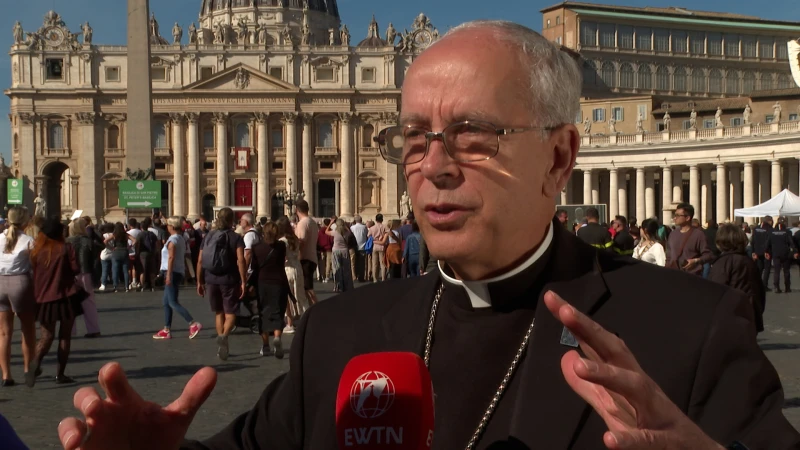 New York and California are pouring taxpayer dollars into Planned Parenthood, joining several other states in counteracting the federal defunding of the abortion giant. / Credit: Jonathan Weiss/Shutterstock
New York and California are pouring taxpayer dollars into Planned Parenthood, joining several other states in counteracting the federal defunding of the abortion giant. / Credit: Jonathan Weiss/Shutterstock
CNA Staff, Oct 25, 2025 / 10:00 am (CNA).
New York and California are pouring taxpayer dollars into Planned Parenthood, joining several other states in counteracting the federal defunding of the abortion giant.
California Gov. Gavin Newsom pledged $140 million to Planned Parenthood locations in California on Oct. 24. On the same day, New York Gov. Kathy Hochul committed $35 million in funding to Planned Parenthood locations in New York.
Both states are known for their abortion shield laws, which protect abortionists who mail abortion pills into states where they are illegal. Several women are suing California and New York abortionists after being poisoned by or coerced into taking the abortion pill by the fathers of their children.
New York and California join several other states that have made similar moves in light of the yearlong federal defunding of Planned Parenthood. Colorado, Massachusetts, and Washington have all taken similar steps to replace lost federal funding for Planned Parenthood over the past few months.
Newsom said on Thursday that California is “protecting access to essential health care” by providing funding for more than 100 locations across the state.
“Trump’s efforts to defund Planned Parenthood put all our communities at risk as people seek basic health care from these community providers,” Newsom said in a statement.
Hochul in a similar vein said she is putting funding toward the 47 Planned Parenthood clinics in New York, alleging that pro-life politicians will “stop at nothing to undermine women’s health care.”
“In the face of congressional Republicans voting to defund Planned Parenthood, I’ve directed the state to fund these vital services, protecting access to health care that thousands of New Yorkers rely on,” Hochul said in a Friday statement.
Hundreds of alternative clinics exist in both states
A spokeswoman for Heartbeat International, a network that supports life-affirming pregnancy centers, told CNA there are many low-cost and even free alternatives to Planned Parenthood across the country — including hundreds of clinics and pregnancy centers in both New York and California.
Andrea Trudden said that “women in California and New York already have access to a vast network of life-affirming care.”
“California has more than 300 pregnancy help organizations and New York nearly 200,” Trudden said, citing Heartbeat International’s Worldwide Directory of Pregnancy Help.
“These centers offer practical support, compassionate care, and resources to women facing unplanned pregnancies, empowering them to choose life for their children and themselves,” she continued.
For women who need health care not related to pregnancy, Trudden noted that both states are “well served” by Federally Qualified Health Centers, which are centers that provide “comprehensive, low-cost medical care for women and families.”
As of 2024, California had more than 170 of these clinics, while New York had more than 60, Trudden said, citing a report by KFF, a health policy institute.
“If leaders truly cared about women’s health, they would invest in these community-based organizations that meet the needs of women before, during, and after pregnancy — not in the nation’s largest abortion provider,” Trudden added.
Kelsey Pritchard, a spokeswoman at Susan B. Anthony Pro-Life America, told CNA that in California, Planned Parenthood “is choosing to shutter primary care rather than give up profiting from abortions.”
In Orange and San Bernardino counties, Planned Parenthood will continue to offer abortions while closing primary care facilities.
“In California, New York, and across the country, Planned Parenthoods are outnumbered by far better options and the pro-life movement is happy to help women locate the care they need,” Pritchard said, citing reports by the Charlotte Lozier Institute on community care centers and pregnancy centers for women.
Jennie Bradley Lichter, the president of the March for Life, criticized politicians for prioritizing abortion funding instead of care for women and children.
“Political leaders who prioritize funding for Planned Parenthood leave no doubt where their priorities lie: and it is not with women and children,” Bradley Lichter told CNA.
“It’s a shame that the leaders of states like California and New York aren’t choosing to pour their resources into institutions that truly support moms, like the huge number of pregnancy resource centers located in each of those states,” she said.
Women deserve better than the “tragedy” of abortion, Bradley Lichter said.
“We at March for Life want women to know that when their state leaders fall short and leave them in the hands of Big Abortion, pro-life Americans will stand in the gap and help them find the love and care they need,” she continued.
Defunding Planned Parenthood: a ‘life-saving’ act
A spokesman for Live Action called the defunding of Planned Parenthood “one of the most lifesaving acts Congress has taken in decades,” noting that the federal government stopped funding the organization that “kills over 400,000 children every year.”
“That victory must be made permanent when the one-year cutoff expires next July,” Noah Brandt told CNA. “Yet pro-abortion states like California and New York are working to undo that progress, using taxpayer money to expand abortion through all nine months and to ship abortion pills nationwide.”
“Federal funding for Planned Parenthood must never return, and states that promote abortion should be held accountable for enabling the mass killing and sterilization of American children,” Brandt said.
Pritchard added that although Planned Parenthood is “constantly scheming to grow their grip on taxpayer money,” the pro-life movement has seen wins around the nation — most especially, the federal defunding of Planned Parenthood.
“Make no mistake, they are losing big in Congress, in courts, and increasingly in the hearts and minds of Americans,” Pritchard said.
Read More







![Military archdiocese: Army’s response to canceled religious contracts ‘inadequate’ #Catholic
Archbishop Timothy Broglio speaks at Mass on Dec. 3, 2023. / Credit: The Basilica of the National Shrine of the Immaculate Conception
Washington, D.C. Newsroom, Oct 22, 2025 / 18:04 pm (CNA).
The Archdiocese for the Military Services, USA, expressed concern that the U.S. Army is not adequately addressing its discontent with canceled religious contracts, which the archdiocese said is straining its ability to minister to Catholics in the armed forces.This month, the Army canceled all contracts for three roles: coordinators of religious education (CRE), Catholic pastoral life coordinators (CPLC), and musicians. The contract terminations affected Catholics and those of other faiths.CREs served as catechists trained by the archdiocese to assist the priests in religious education in the military chapels. The archdiocese also trained CPLCs who offered administrative support such as liturgy coordination, assistance with sacramental record documentation, and weekly bulletin preparation. Contracts also included musicians, usually pianists who played music during Mass.Military Services Archbishop Timothy Broglio sent a letter to Congress on Oct. 17 saying Army officials assured him that religious affairs specialists (RAS) and directors of religious education (DREs) — federal employees — would accommodate the needs of the archdiocese amid the canceled contracts but that he believes this is not possible.Neither an RAS nor a DRE is a trained catechist, he explained, and neither are properly trained or qualified to perform the roles of people who served in the canceled contracts. There is no requirement for a DRE to be Catholic or for an RAS to have any faith.In response to the archdiocesan complaint, an Army spokesperson told CNA it would reexamine its contract support for RASs and DREs “to mitigate any potential impact during this period.“Archdiocese: Response is ‘wholly inadequate’Elizabeth A. Tomlin, a lawyer for the archdiocese, told CNA that the Army’s response is “wholly inadequate” and “demonstrates the spokesperson’s total lack of understanding of the issue.”“Merely eight DREs across the entire Army are Catholics, so most DREs are not qualified to direct Catholic religious education,” Tomlin said.“[RASs] are soldiers, [usually] anywhere from private first class to staff sergeant in rank,” she explained. “There is no requirement whatsoever for RASs to be Catholic or have any training in catechesis or catechetical methodology that could possibly equip them to coordinate religious education.”Tomlin rejected the Army’s assertion that people in these positions could fulfill the work of the CREs, CPLCs, or musicians.“Without meeting the basic requirement of a catechist, namely, to be a confirmed Catholic, these people are not qualified to be involved in Catholic religious education programs whatsoever,” she said.Tomlin said the only way to have music during Mass is if someone volunteers.“It is factually inaccurate that DREs or RASs are fulfilling the duties of CREs, CPLCs, or liturgical musicians,” Tomlin said.‘No knowledge of our faith’Jena Swanson — who worked as a Catholic CRE at Fort Drum from August 2024 until her contract was canceled on March 31, 2025 — told CNA she agrees with the archdiocese’s assessment that those employees cannot fulfill the roles of those whose contracts were canceled.She said she helped facilitate religious education classes, Bible studies, sacrament preparation classes, and retreats, and collected sacramental records, among a variety of other tasks. She said she mostly worked independently of the DRE because that employee did not have much knowledge about the Catholic faith.“The DRE is not guaranteed to be Catholic depending on the installation military families are stationed at,” Swanson said. “In our 13 years of military family life (my husband is active duty Army), we’ve experienced one Catholic DRE and only for two years.”She said in her experience, RASs “are as helpful as they can be” but often “have no knowledge of our faith.”Swanson said the Catholic community at Fort Drum “was thrown into a bit of chaos” once her contract ended. Some weeks there were no teachers for religious education, families did not know whom to direct questions to, and weekly Mass attendance dropped about 50%.“Our families want answers and want to continue coming to our parish, but if these options are not open it will drastically affect attendance and faith formation,” Swanson said.](https://unitedyam.com/wp-content/uploads/2025/10/military-archdiocese-armys-response-to-canceled-religious-contracts-inadequate-catholic-archbishop-timothy-broglio-speaks-at-mass-on-dec-3-2023-credit-the-basili.webp)

![State-level religious freedom protections grow in recent years #Catholic
Thirty states have adopted some version of the Religious Freedom Restoration Act (RFRA) first signed into law by President Bill Clinton in 1993. / Credit: Leigh Prather/Shutterstock
Washington, D.C. Newsroom, Oct 21, 2025 / 17:56 pm (CNA).
Protections for religious freedom in the U.S. have grown in recent years with multiple states adopting laws to strengthen the constitutional right to freely exercise one’s religion.As of 2025, 30 states have adopted a version of the federal Religious Freedom Restoration Act (RFRA) or similar legislative protection for religious freedom. The most recent states to adopt those protections for state-level laws were Georgia and Wyoming in 2025 and Iowa, Utah, and Nebraska in 2024. West Virginia and North Dakota adopted them in 2023 and South Dakota and Montana did the same in 2021.RFRA was first adopted in 1993, when then-President Bill Clinton signed it into law to expand religious freedom protections. Under the law, the federal government cannot “substantially burden” the free exercise of religion unless there is a “compelling government interest” and it is carried out in the “least restrictive” means possible.Congress passed the law in response to the 1990 Supreme Court decision in Employment Division v. Smith, which asserted that the First Amendment was not violated as long as a law was “neutral and generally applicable.” The law was intended to provide a stronger safeguard for the free exercise of religion than what was provided by the highest court. Bipartisan consensus gone, but opposition weakeningWhen RFRA was adopted at the federal level in the 1990s, the protections had overwhelming bipartisan support. In the 2010s, that bipartisan consensus waned as most Democrats voiced opposition to the protections.Tim Schultz, the president of the 1st Amendment Partnership, told CNA that in 2013, two states adopted RFRA with nearly unanimous support from Republicans and about two-thirds support from Democrats. However, the law became more divisive after the 2014 Supreme Court ruling in favor of exempting Hobby Lobby from a mandate to provide abortifacient drugs based on RFRA.“That [bipartisan support] seems like a million years ago,” Schultz said. “Now I would say Republican support is about the same as it was then. Democratic support is under 5%.”Although Schultz did not express optimism that bipartisan support could return any time soon, he credited some cultural shifts for the strong success in Republican-leaning states over the past four years.From 2014 through 2020, he said business groups and LGBT groups “were working together very strongly … in opposition to religious freedom bills” because they saw them as threats to certain anti-discrimination laws related to workplace policies from religious employers.However, post-2020, he said, “the politics of RFRA are far more favorable,” and he noted there has been “far less opposition from business groups.”One reason for this change, according to Schultz, was the widely-published story of NCAA championship swimmer Lia Thomas, a biologically male swimmer who identified as a transgender woman and competed in women’s sports. This led polling to “change on every issue related to LGBT,” he noted.Another reason, he argued, was the response to transgender-related policies by Target and the Bud Light ads, which led to “consumer anger at both of them.” He noted the money lost by the corporations “made business groups say ‘we are not going to have the same posture.’”In spite of the partisanship that fuels the current debate, Schultz noted RFRA has been used to defend religious freedom on a wide range of issues, some of which have pleased conservatives and others that have pleased progressives.Although RFRA has been used to defend religious freedom on issues related to contraception, abortion, gender, and sexuality, it has also been used to defend religious organizations that provide services for migrants. “[RFRA is] not politically predictable,” Schultz said.](https://unitedyam.com/wp-content/uploads/2025/10/state-level-religious-freedom-protections-grow-in-recent-years-catholic-thirty-states-have-adopted-some-version-of-the-religious-freedom-restoration-act-rfra-first-signed-into-law-by-president.webp)



![U.S. bishops warn of looming court order in Obama-era immigration program #Catholic
A DACA protest sign is waved outside of the White House. / null
CNA Staff, Oct 18, 2025 / 09:00 am (CNA).
The U.S. Conference of Catholic Bishops (USCCB) released an update this week on the Deferred Action for Childhood Arrivals (DACA) program highlighting the threat a looming court order may pose to the legal privileges of some immigrants in Texas.Immigrants covered by DACA who move to or from Texas could quickly face the loss of their work authorization under the new court order, according to the bishops' Department of Migration and Refugee Services.Launched in 2012 through executive action by then-President Barack Obama, DACA offers work authorization and temporary protection from deportation to undocumented immigrants brought to the U.S. as minors. The first Trump administration tried to end the program but was blocked from doing so in 2020 by the U.S. Supreme Court. While President Donald Trump has indicated a willingness to work with Democrats on the status of DACA beneficiaries, the program continues to be subject to litigation, with the latest developments centering on the Texas v. United States case.In that case, Texas sued the federal government claiming that DACA was illegally created without statutory authority, as it was formed through executive action rather than legislation passed by Congress.In January, the Fifth Circuit Court of Appeals largely upheld the U.S. district court’s declaration that DACA is unlawful, but narrowed the scope to Texas, separating deportation protections from work authorization. This means, in theory, that DACA's core shield against removal could remain available nationwide for current recipients and new applicants, while work permits might be preserved for most — except in Texas. Impending implementation The USCCB's Oct. 14 advisory comes as the district court prepares to implement the ruling upheld by the appeals court. On Sept. 29 the U.S. Department of Justice issued guidance concerning how the order should be implemented. Andrew Arthur, a former immigration judge and a fellow at the Center for Immigration Studies, told CNA that the key takeaway from the USCCB’s update is a “warning” to DACA recipients “who live in Texas.”"[A]nyone who has DACA or is eligible to receive it would need to consider the implications of moving to or from Texas," the USCCB update states, pointing out that relocation could trigger revocation of employment authorization with just 15 days' notice. For Texas's approximately 90,000 DACA recipients — the second-largest population after California's 145,000 — the implications could be stark, according to the bishops. Under the order, if it is implemented according to the U.S. government’s proposals, DACA recipients who live in Texas could receive "forbearance from removal" (deferred deportation) but lose "lawful presence" status, disqualifying them from work permits and benefits like in-state tuition or driver's licenses. To be eligible for DACA, applicants must have arrived before age 16, resided continuously since June 15, 2007, and been under the age of 31 as of June 15, 2012. There are approximately 530,000 DACA participants nationwide according to KFF, formerly the Kaiser Family Foundation. The KFF estimates that up to 1.1 million individuals meet DACA eligibility criteria.](https://unitedyam.com/wp-content/uploads/2025/10/u-s-bishops-warn-of-looming-court-order-in-obama-era-immigration-program-catholic-a-daca-protest-sign-is-waved-outside-of-the-white-house-nullcna-staff-oct-18-2025-0900-am-cna-the-u.webp)
